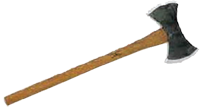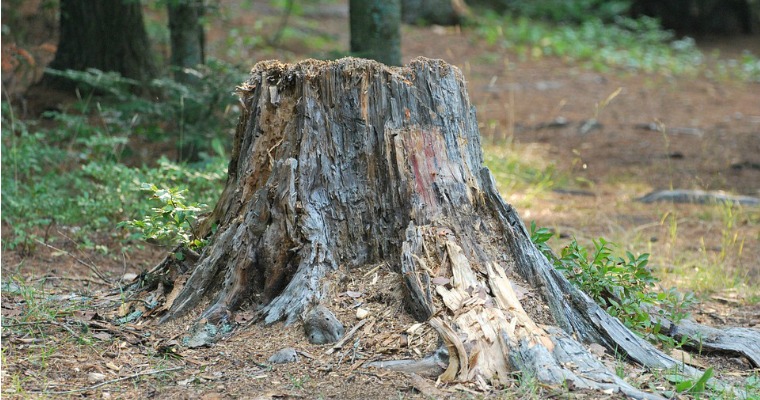This is a question many homeowners ask. Statistics show that termites and other wood-boring pests cause roughly $30 billion worth of damage to crops, homes and man-made structures. Classified as eusocial insects, termites feast on the organic matter of which wood is made (cellulose).
Unfortunately for homeowners, this means substantial structural damage in the event of an infestation, which is why it’s important to familiarize yourself with the elements that attract termites.
So, can an old tree stump in your yard attract termites? The short answer to this question is yes, tree stumps can attract termites.
There are two specific types of termites that may be attracted to tree stumps: dampwood and subterranean. Subterranean termites are the standard and most common type of termites. They’ll feast on just about any type of wood of substance containing cellulose.
Dampwood termites, on the other hand, generally only feast on wood that’s already rotting and decaying. If you see dampwood termites in the tree stump, they shouldn’t pose an immediate concern to your home. Subterranean termites, on the other hand, are a different story/
Signs of a Tree Stump Termite Infestation
You can usually tell if a tree stump is infested with termites by looking for a few signs. First and foremost, is the presence of hollowed wood.
Termites typically don’t feast from the outside of the structure. Instead, they begin feasting within the structure, working their way out. If the tree stump looks or feels hollowed, there’s a good chance that it’s infested with termites.
A simple test you can perform to determine if the tree stump is hollowed is to poke it with a screwdriver. If the screwdriver goes through with relative ease, it’s usually because the inside has been eaten away by termites.
Another sign of a termite infestation in a tree stump is the presence of discarded wings. While both termites and flying ants have wings, the latter does not discard them. Therefore, discarded wings lying on or around a tree stump is indicative of a termite infestation.
Remove the Tree Stump
The good news is that you can usually eliminate the problem by removing the tree stump from your yard. Turning a blind eye will only make the problem worse.
Once the termites have devoured the stump, they’ll move on to other wooden structures nearby, including your home. If you believe a tree stump in your yard is infested with termites, have it removed ASAP to protect your home and property from costly damage.
The Woodsman Company offers tree planting, tree pruning and shrub trimming, tree removal and stump grinding as well as a tree wellness program.
If we can help with any of your tree care needs give us a call at 512-846-2535 or 512-940-0799 or


My wife and I noticed that our old tree isn’t looking good lately and think it might be infested. We’ll have to try using a screw driver like you suggest to check if the inside has been eaten or rotted. If we confirm our suspicions we might have to look into hiring a removal service. Thanks for sharing!
Your information about subterranean termites and how they’re a threat to most households really caught my attention. This is because my brother recently cleared out a couple of dead trees near his yard to make way for a couple of extension projects. However, he seems to have left the stumps behind and it makes me worry that termites might use them as a way to infest his house. Before any of this happens, I’ll help him out by getting a stump grinding service to stop by his house.
Thanks for explaining that old stumps can attract termites to our yard. My sister and her husband just purchased an older home with two large stumps near the back of the property line. I’ll have to pass along this info so they can look for a stump grinding service to get rid of them soon!